Donchian Channel: Definition, How it Works, Trading, and Advantages
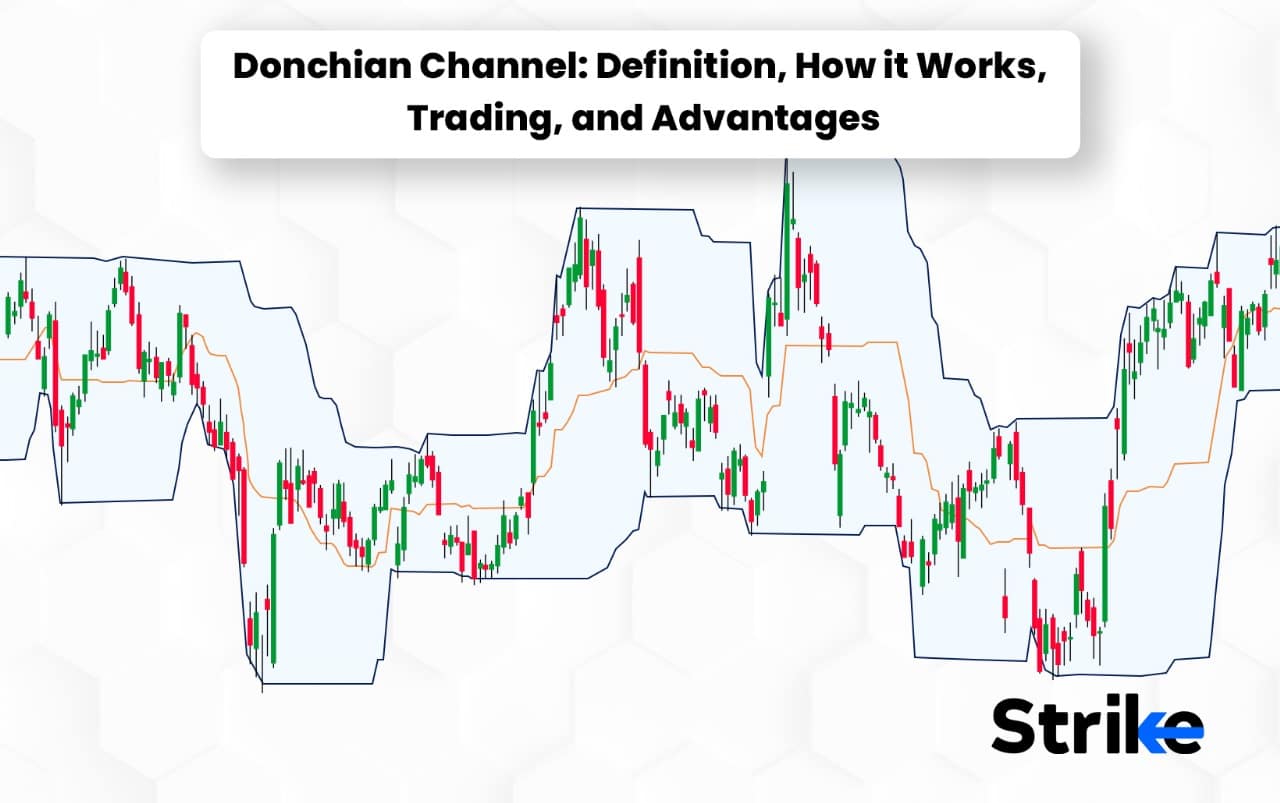
The Donchian Channel is a common technical analysis method used in finance and trading. The Donchian Channel gets the name after its founder Richard Donchian, who was a key player in the creation of trend-following tactics. The Donchian Channel consists of three lines- the upper channel line, the lower channel line, and the centerline, which is the average of the other two. It is mostly used to spot possible breakouts, trend reversals, short term trade opportunities and market volatility.
The Donchian Channel is calculated by locating the highest high and lowest low during a given time period, known as the look-back period. The center line is formed from the average of the two, with the highest high serving as the upper channel line, the lowest low serving as the lower channel line. The look-back duration can be changed by traders in accordance with their trading preferences and timeframes. A longer period, such as 50 days, would be more suited for finding longer-term patterns, whereas a shorter time, such as 20 days, would catch shorter-term trends.
The Donchian Channel gives traders a simple and intuitive way to spot trends, short term trades, breakouts, and probable entry and exit locations. Its clarity of signals reduces ambiguity and emotional decision-making, and its simplicity makes implementation simple. This enables them to understand volatile markets and improve their trading selections.
What is Donchian Channel?
The Donchian Channel is a technique for technical analysis used in trading and finance to spot future market volatility, trends, and breakouts. The Donchian Channel consists of three lines: the center line, which is the average of the other two, the middle channel line, and the lower channel line. The channel is determined by comparing the highest high and lowest low values during a predetermined look-back period, which is normally configurable to accommodate various periods.
The center line represents the average of the two channel lines, which are taken from the highest high and lowest low, respectively. The Donchian Channel is frequently used by traders to open positions when the price moves above the upper channel line, indicating a potential uptrend, or below the lower channel line, indicating a potential decline or trade the potential short term fluctuations around the channel lines and center line.
The Donchian Channel’s key benefit is its simplicity and clarity. It lessens uncertainty and emotional decision-making by visually presenting pricing channels and spotting breakouts. The look-back period can also be modified by traders to fit their chosen periods, giving them flexibility to identify both short-term and long-term patterns.
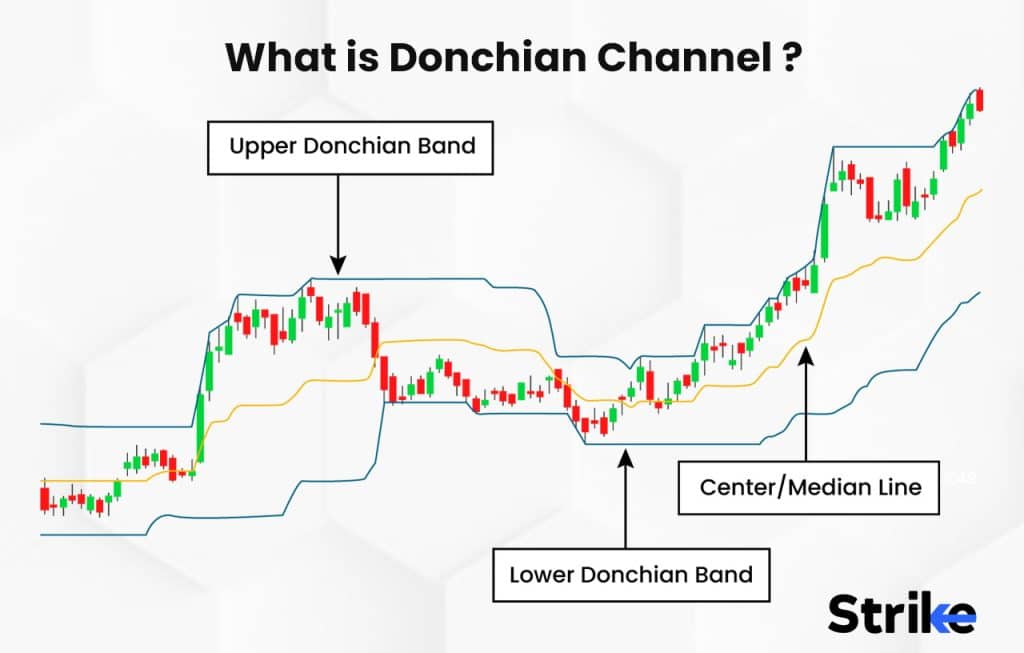
The Donchian Channel’s key benefit is its simplicity and clarity. The Donchian Channel’s simple design makes it easy for traders to comprehend and include in their tactics. It lessens uncertainty and emotional decision-making by visually presenting pricing channels and spotting breakouts. The look-back period can also be modified by traders to fit their chosen periods, giving them flexibility to identify both short-term and long-term patterns.
Who developed Donchian Channel?
The Donchian Channel was created by Richard Donchian, an American economist, trader, and mentor. Richard Donchian is known as the “Father of Trend Following.” He is most renowned for his innovative work in trend-following tactics and technical analysis. Donchian launched the brokerage business Futures Inc. in 1949, which was one of the first to provide managed futures accounts.
The Donchian Channel is a trend-following indicator that is calculated by graphing the highest high and lowest low of the past N periods. The Donchian Channel is the region that lies between the upper and lower bands.
The Donchian Channel can be used to identify both uptrends and downtrends. The indication that the trend is up is when the price moves over the top band. A downtrend is indicated when the price moves below the lower band. You can also use the Donchian Channel to determine your stop-loss and profit objectives.
How does a Donchian Channel work?
The Donchian Channel, is a popular technical indicator in financial markets. It has two lines: the top channel line shows the maximum price for a selected time period, and the bottom channel line shows the lowest price. The Donchian Channel, which denotes the trading range, is defined by the area between these lines.
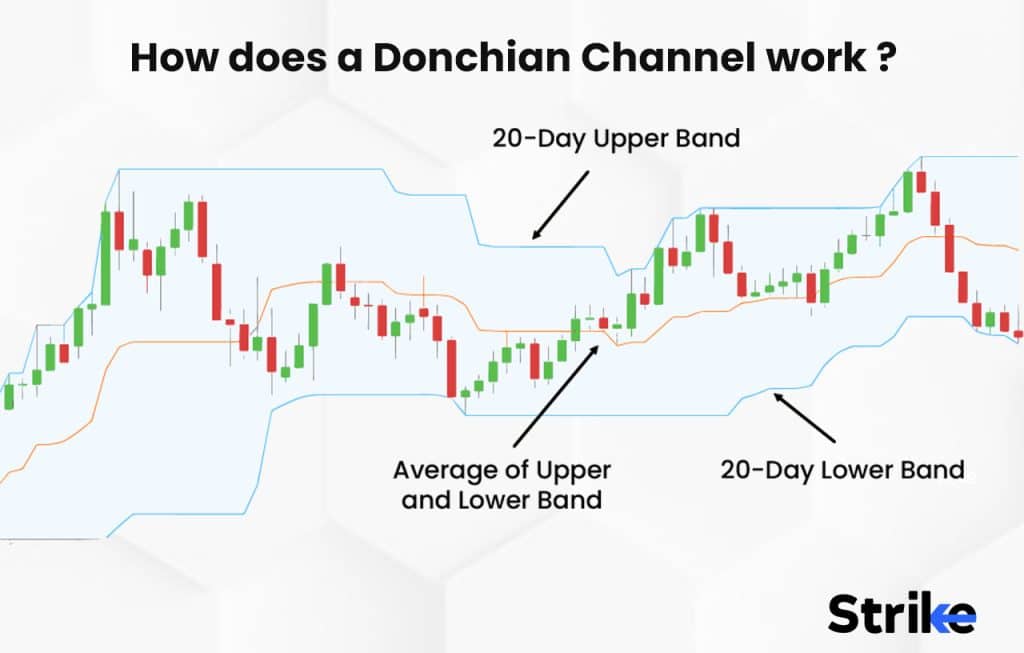
The Donchian Channel is used by traders to determine potential support and resistance levels. Breakout methods entail keeping an eye out for price fluctuations that cross channel lines and indicate probable trend shifts or continuances. Traders try to find potential trade setups around upper center and lower channel lines. Bullish breakouts occur when the price exceeds the upper channel line, whereas bearish breakouts occur when the price goes below the lower line.
The Donchian Channel also aids traders in trend-following. A bullish trend is suggested by trading consistently above the middle line, while a negative trend is shown by trading consistently below it.
How is Donchian Channel used in Technical Analysis?
The main uses of this Donchian Channel are trend detection, breakout trading, short term trade setups and support/resistance level analysis. A bullish trend is indicated by the price being above the middle line of the channel, while a bearish trend is shown by the price being below the middle line. This relationship between price and the channel’s middle line allows traders to determine the current market direction. Monitoring price swings beyond the upper and lower channel lines, which indicate the beginning of fresh trends or the continuation of old ones, is a key component of breakout techniques. The Donchian Channel also acts as dynamic levels of support and resistance, assisting traders in determining entry and exit locations as well as stop-loss orders.
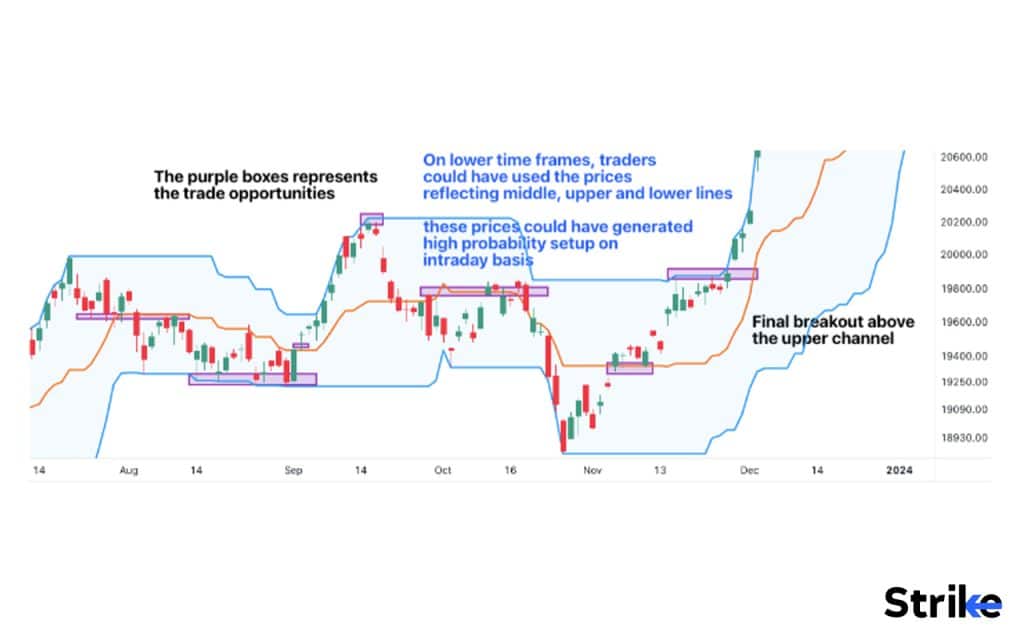
The channel’s breadth also reflects market volatility, giving traders the opportunity to modify their risk-management plans as necessary. The Donchian Channel also assists in spotting probable trend reversals when the price passes the median line. Traders find the Donchian Channel beneficial for examining market trends, volatility, and trading ranges; nevertheless, it should be utilized in conjunction with other indicators and technical analysis techniques for a thorough approach.
What are the key parameters of the Donchian Channel?
The Donchian Channel, a prominent technical indicator, contains two important parameters that traders can modify to their own needs. The first parameter, “Time Period,” establishes how long the Donchian Channel will be computed over. Any particular time period, such as 20 days, 50 days, or any desired interval, is selected by traders. The sensitivity of the Donchian Channel depends on the length of the time interval; shorter intervals produce more volatile and sensitive channels, while longer intervals provide smoother and wider channels.
The “Upper and Lower Channel Lines” are the second crucial component of the Donchian Channel. The highest high and lowest low prices recorded over the selected time period are used to generate these lines. The lower channel line symbolizes the least expensive pricing, and the upper channel line the most expensive price. Together, these lines define the channel’s edges and offer important details regarding prospective breakout chances as well as support and resistance levels.
The Donchian Channel can be modified to reflect a trader’s unique trading techniques, market preferences, and risk tolerance by modifying the time period and comprehending the upper and lower channel lines. It nevertheless remains a useful tool for examining patterns, volatility, and potential trading signals across a range of financial markets.
How to Trade using Donchian Channel?
The following are the steps for a systematic method of trading using the Donchian Channel. Take a look at the image below.
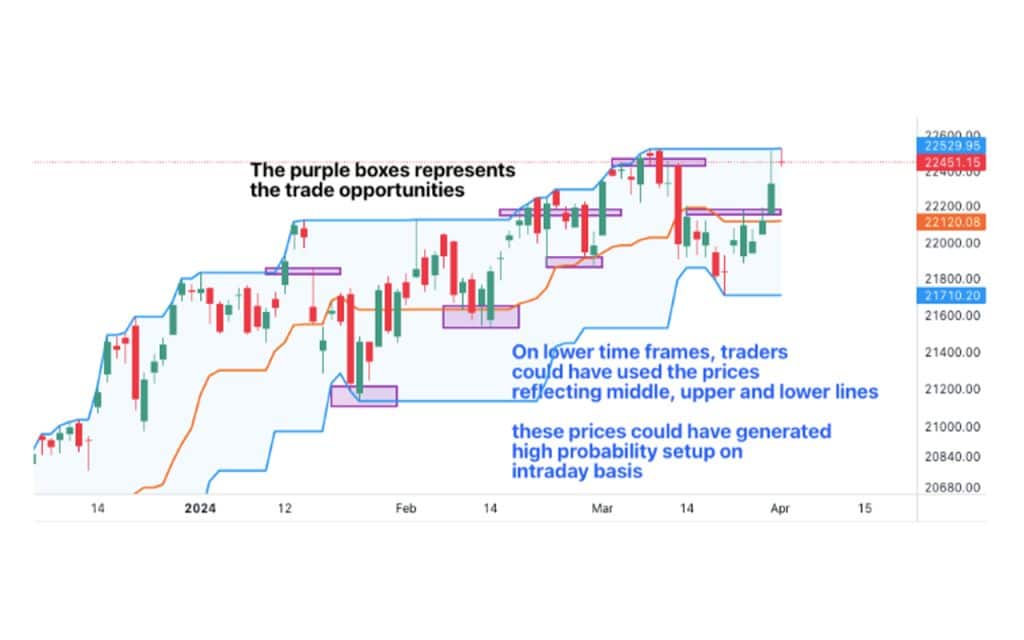
- Set up the indicator first by selecting a suitable time period, such as 20 days or 50 days, based on your trading preferences and market circumstances. The indicator will be applied on the charts by selecting it from the list of indicators.
- Observe the price’s location in relation to the middle line of the Donchian Channel to determine the current trend. Price movement that continuously exceeds the center line denotes a bullish trend, while price movement that consistently deviates from it denotes a bearish trend.
- From the image uploaded above, one can observe how the Donchian Channel reflected key prices. These prices eventually managed to provide ample trading opportunities and hindsights on lower time frames.
- Keep a watchful eye on price changes around the channel lines for potential breakout possibilities. A bullish breakout, which denotes a probable upward trend, happens when the price closes above the upper channel line. A bearish breakout, on the other hand, happens when the price closes below the lower channel line, signaling a prospective downward trend. You can use these breakouts as entry indications for your trades. These breakouts may also fail. Taking into account possibilities of uncertainties.
- The upper and lower channel lines can also be used as dynamic levels of support and resistance. Price movements can come across resistance as it approaches the top channel line, while bounces off the lower channel line are signs of support. These levels should be used to determine your entry and exit positions. You should also think about using stop-loss orders to reduce risk.
How can traders identify trend reversals or breakouts using the Donchian Channel?
The Donchian Channel is a flexible technical indicator used in trading to spot trends, possible breakouts, spot trade setups on lower time frames and support/resistance levels. The time period and the top and lower channel lines are its two main characteristics. The time period is changed by traders to fit their trading preferences and market conditions. Traders can determine the current trend, whether bullish or bearish, by observing price movements relative to the centerline of the Donchian Channel. Breakouts are seen when the price closes above the upper channel line, signaling a possible upward trend, or below the lower channel line, suggesting a possible downward trend.
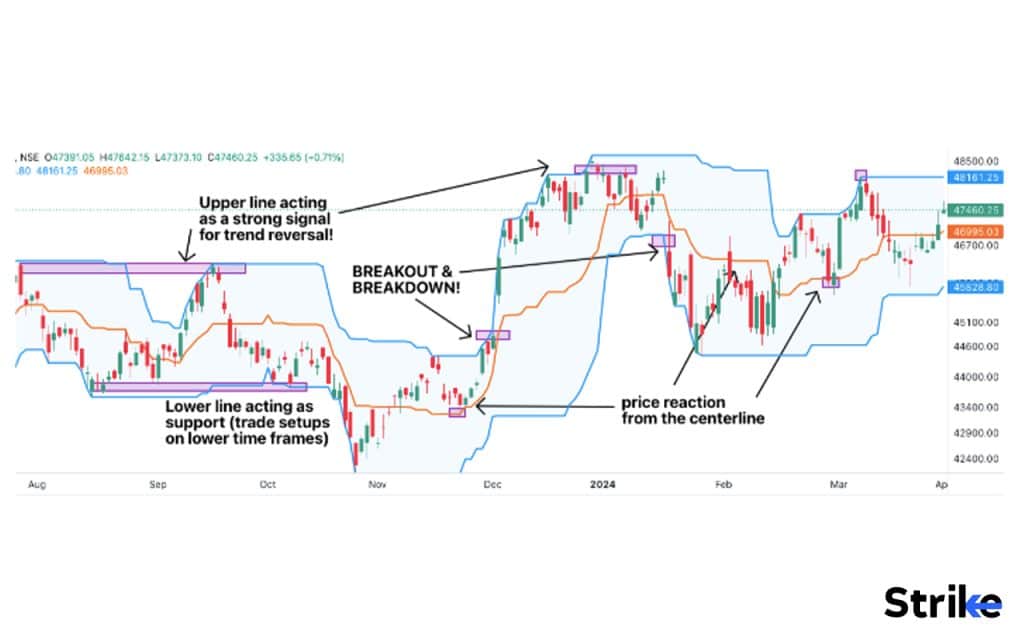
In the chart uploaded above, observe how the elements of the Donchian Channel managed to provide a lot of insights regarding the market activity and provided abundant opportunities for trend reversal and breakouts.
The upper and lower channel lines serve as dynamic support and resistance levels, assisting traders in choosing entry and exit locations and stop-loss levels.
What trading strategies can be used for Donchian Channel?
The Donchian Channel offers a variety of trading methods that traders can utilize to efficiently manage risk, spot trends, and spot breakouts. The following are 5 popular Donchian Channel trading strategies.
- Trend strategy: Traders can utilize the Donchian Channel to pinpoint the market’s dominant trend. They initiate long positions when the price regularly moves above the middle line, suggesting a bullish trend. They enter short positions when the price continuously moves below the middle line, indicating a bearish trend. Traders find short term trades on the price reflected by the centerline.
- Breakout strategy: Price breakouts above the top channel line indicate possible bullish breakouts, while price breakouts below the lower channel line indicate potential bearish breakouts. They enter long positions when a bullish breakout happens and sell positions when a negative breakout occurs. Breaks above the centerline are also traded. To control risk, stop-loss orders should be put just outside the channel.
- Channel Trading Strategy: Traders rely on the Donchian Channel as dynamic support and resistance levels support and resistance. They go long when the price moves back up from the lower channel line (support), and they short when it moves back down from the upper channel line (resistance).
- Trend Reversal Strategy: Price fluctuations that cross the Donchian Channel’s centerline are watched by traders for signs of probable trend reversals. They enter counter-trend positions when there are signs of a trend shift.
These are some of the trading strategies used by traders. Use it cautiously and use stop-loss for ideal results.
Can you use Donchian Channel as stop loss?
Yes, we can utilize the Donchian Channel as a stop-loss technique while trading.
Traders frequently set their stop-loss orders exactly outside the Donchian Channel when using it as a stop-loss method, either above the upper channel line for short positions or below the lower channel line for long positions. Traders use this in an effort to shield their holdings from unfavorable price changes outside of the channel.
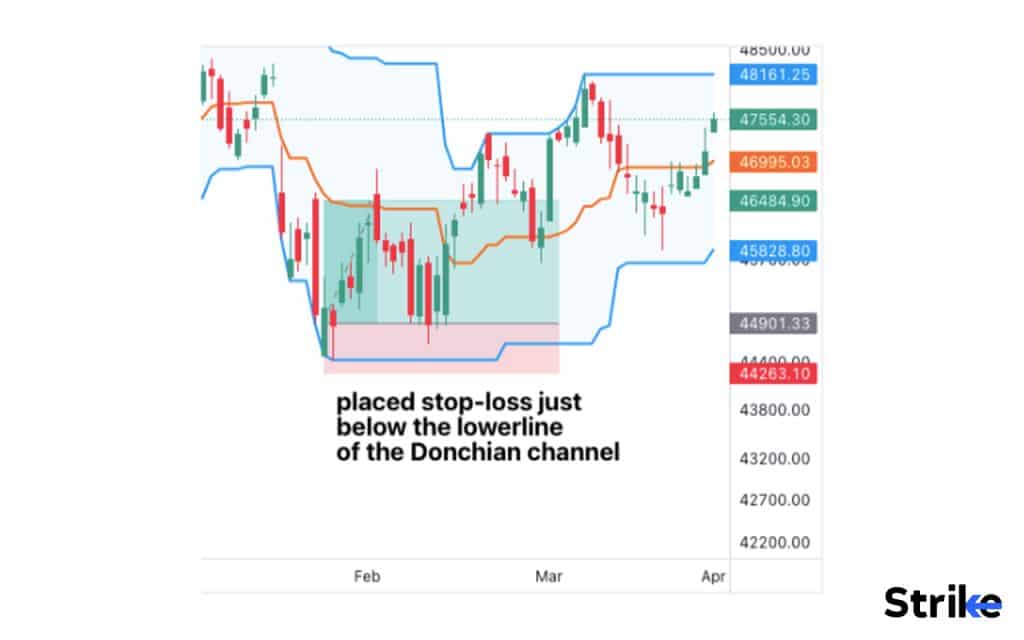
How effective is Donchian channel?
The Donchian Channel’s performance as a trading tool is influenced by a number of factors, including market circumstances, the time period used, the trader’s approach, and risk management methods. The Donchian Channel appears in trending markets as a trend identification indicator. It gives traders a visual depiction of upper and lower price limits that makes it easier to spot prevalent patterns. The values or prices received by applying this channel on higher time frames gives a lot of opportunities on lower time frames.
It is also frequently used in breakout trading methods, which alert traders to probable breakouts when the price closes above or below the upper or lower channel lines. The Donchian Channel, however, sometimes provides misleading signals or frequent whipsaws in range-bound or sideways markets, reducing its efficacy.
How does the Donchian Channel perform in different asset classes?
The Donchian Channel is frequently adjusted to various time frames in accordance with traders’ trading philosophies in order to maximize its usefulness. It is essential to use solid risk management techniques, such as setting stop-loss orders outside the channel and employing the proper position sizing. The Donchian Channel’s dependability is increased and a more complete picture of the market is provided by combining it with other indicators or analysis techniques. The Donchian Channel can be a useful tool for spotting trends, breakouts, and prospective trading opportunities when properly utilized as part of a comprehensive trading strategy.
The Donchian Channel can be useful for spotting trends and breakouts in the commodity market, particularly in commodities with clearly defined supply and demand dynamics. The Donchian Channel faces difficulties in performing since commodity prices are affected by a variety of variables, including weather and geopolitical developments. The Donchian Channel is also used to spot trends and breakout possibilities in the bitcoin market. The extreme volatility and speculative nature of cryptocurrencies, however, can lead traders to employ shorter time frames and exercise care when interpreting signals. They frequently combine the Donchian Channel with sentiment research and other indicators.
How can Donchian Channel work well with other Indicators?
The Donchian Channel can successfully be used in conjunction with other indicators to build a solid trading plan and acquire a better understanding of the market. Traders can check trend orientations and probable entry or exit locations using crossovers in conjunction with moving averages. Relative Strength Index (RSI) and Donchian Channel integration can assist traders spot overbought or oversold circumstances and predict future reversals. Picture below shows how donchian channel and be used with MACD indicator.
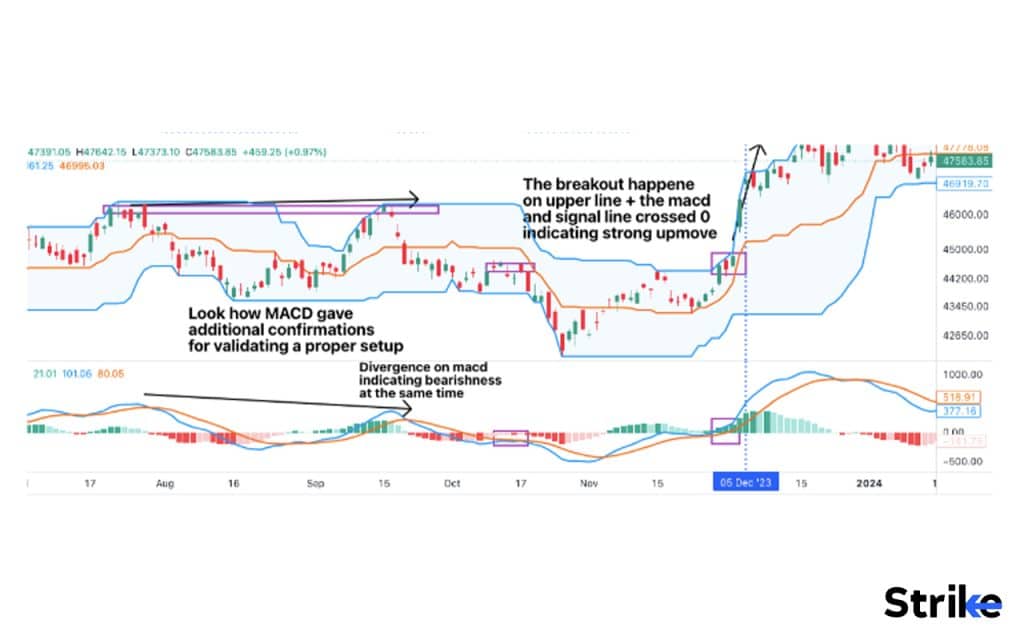
The Moving Average Convergence Divergence (MACD) can be used in conjunction with the Donchian Channel to determine trend momentum, with crosses of the MACD line and the signal line acting as extra confirmation for trading signals. Traders can measure market volatility by combining Bollinger Bands with the Donchian Channel, particularly when the price exits the Donchian Channel while the Bollinger Bands are growing. Traders are supposed to combine indiators and dive deep in different time frames and price action analysis to solidify a trading plan.
What are the Advantages of Donchian Channel?
The Donchian Channel is a flexible technical indicator that provides traders in the financial markets with a number of benefits. The following are 5 advantages of Donchian Channel.
- Trend Recognition: The Donchian Channel has the capacity to recognize market trends as one of its main features. The upper and lower bounds of price changes over a selected time period are immediately visible to traders, making it easier to identify current trends and their possible course.
- Breakout Signals: The Donchian Channel is excellent at producing breakout signals when the price closes above the upper channel line (bullish breakout) or below the lower channel line (bearish breakout). These signals are used by traders to locate possible entry positions for trading opportunities.
- Dynamic Support and Resistance: The Donchian Channel’s upper and lower lines serve as dynamic support and resistance levels. Traders can use these levels to identify possible points of a market reversal and construct stop-loss or take-profit orders appropriately.
- Customizable Time Periods: Traders can modify the Donchian Channel’s time period to match their trading preferences and style. Longer time periods provide a broader view for long-term trend detection, while shorter time periods offer more sensitive indications for short-term trading.
- User-Friendly & Simplicity: The Donchian Channel is simple to use and comprehend, making it suitable for traders of all levels. Traders can immediately understand market patterns and possible breakout possibilities because of its simplicity without having to do intricate calculations.
The Donchian Channel brings significant advantages to traders by assisting in trend identification, breakout signals, dynamic support and resistance levels, and customizability. It works harmoniously with other indicators and can be applied to various asset classes.
What are the Disadvantages of Donchian Channel?
The Donchian Channel has established itself as a useful technical indicator in trading thanks to its capacity to recognise trends, recognise breakouts, and provide dynamic support and resistance levels. The Donchian Channel has disadvantages, too, just like every tool, which traders should consider before adding into their trading methods.
The following are 5 disadvantages of Donchian Channel:
- Whipsaws in Choppy Markets: The Donchian Channel’s propensity to provide misleading signals, particularly in choppy or range-bound markets, is one of its key drawbacks. Over-dependence on this indicator perhaps results in losses.
- Lagging Indicator: The Donchian Channel is a lagging indicator since it is based on previous price data. As a result, the indications sometimes do not accurately represent current market circumstances. The lagging nature of the indicator sometimes cause traders to lose out on the best entry or exit points.
- Limited Information on Price power: While indicating the upper and lower limits of price movements, the Donchian Channel offers no insight into the trend’s or breakout’s power. To determine price momentum and verify the accuracy of signals, traders would need to utilize additional indicators or analytical techniques.
- Not the Best for Short-Term Scalping: The Donchian Channel sometimes is not the best for short-term scalping, especially with larger time frames. The channel sometimes does not effectively capture short-term price fluctuations captured by the channel, leading to less precise signals for quick trades.
The Donchian Channel, despite its drawbacks, is still an important trading tool since it can identify trends, breakouts, short term trading setups and support and resistance levels. Traders should be aware of market circumstances, use additional indicators in addition to the Donchian Channel, and practice prudent risk management in order to successfully remove its drawbacks.
Is the Donchian Channel reliable?
Yes, the Donchian Channel is considered reliable as a trading tool when used in the appropriate market conditions. Its effectiveness is notable in trending markets, where it can identify and capture established trends, as well as in breakout trading strategies, where it signals potential entry points. Applying the Donchian channel on higher time frames and using those prices on lower time frames to identify trade opportunities is highly useful.
Is the Donchian Channel accurate?
No trading indicator or tool is accurate. Yes, the Donchian Channel can be said to be a precise trading tool. Its ability to identify trends, breakouts, and support/resistance levels can lead to precise trading signals, helping traders make informed decisions.
What is the difference between Donchian Channel and Bollinger Bands?
| Donchian Channels | Bollinger Bands |
| It plots the highest high and lowest low over a lookback period | It plots standard deviation bands above and below a simple moving average |
| identifies support and resistance levels | identifies overbought and oversold conditions. |
| It consists of an upper band that connects the highest highs over the lookback period, and a lower band that connects the lowest lows over the same period. | The upper band is plotted at two standard deviations above the moving average while the lower band is two standard deviations below. |
| This channel acts as an area of support and resistance for prices. A breach above or below the Donchian Channel represents a potential trend change. | The closer the prices move to the upper or lower bands, the more overbought or oversold the security is considered to be. A movement outside the bands suggests increased volatility. The width of the bands also indicates the degree of price volatility. |









 Previous Article
Previous Article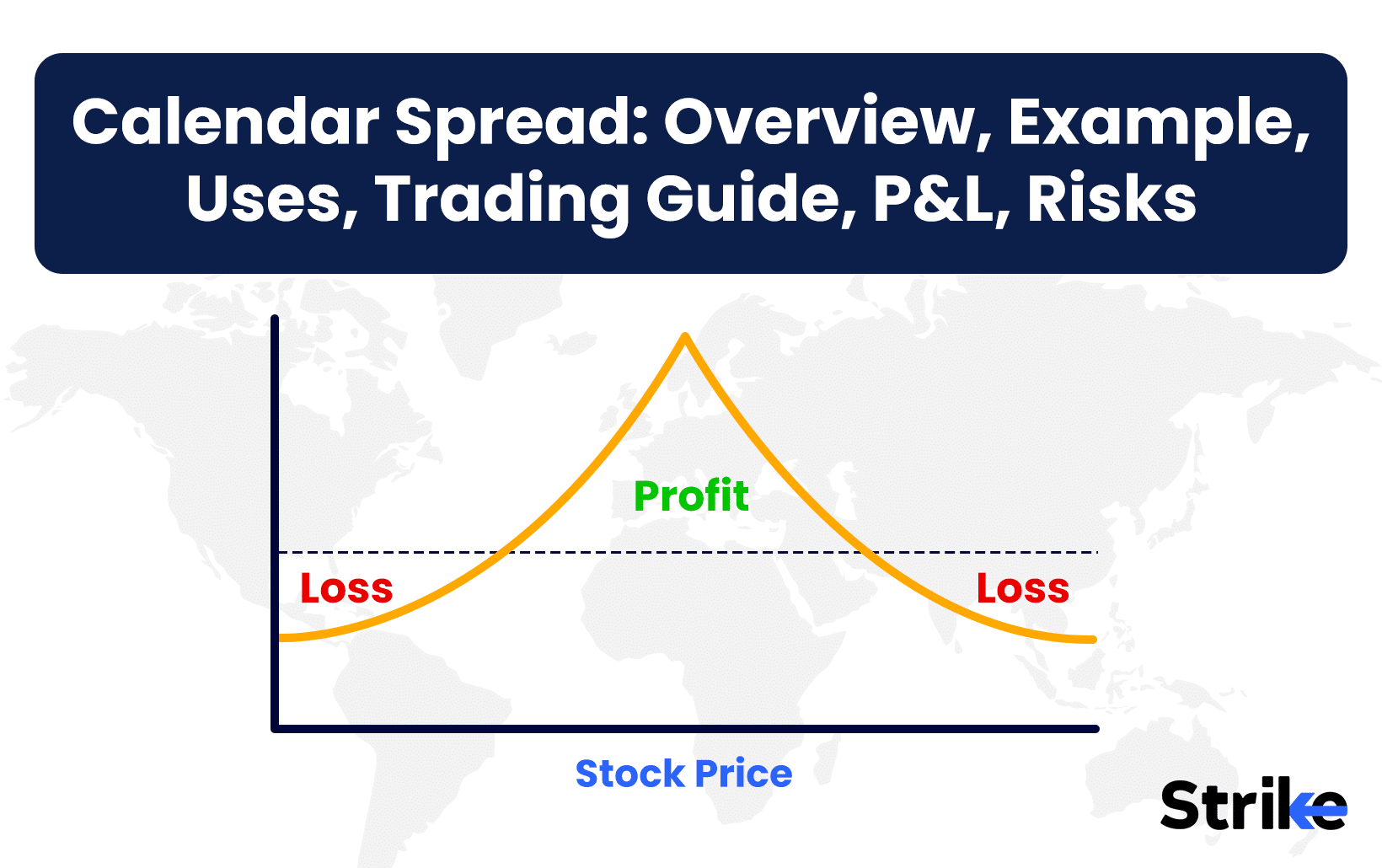
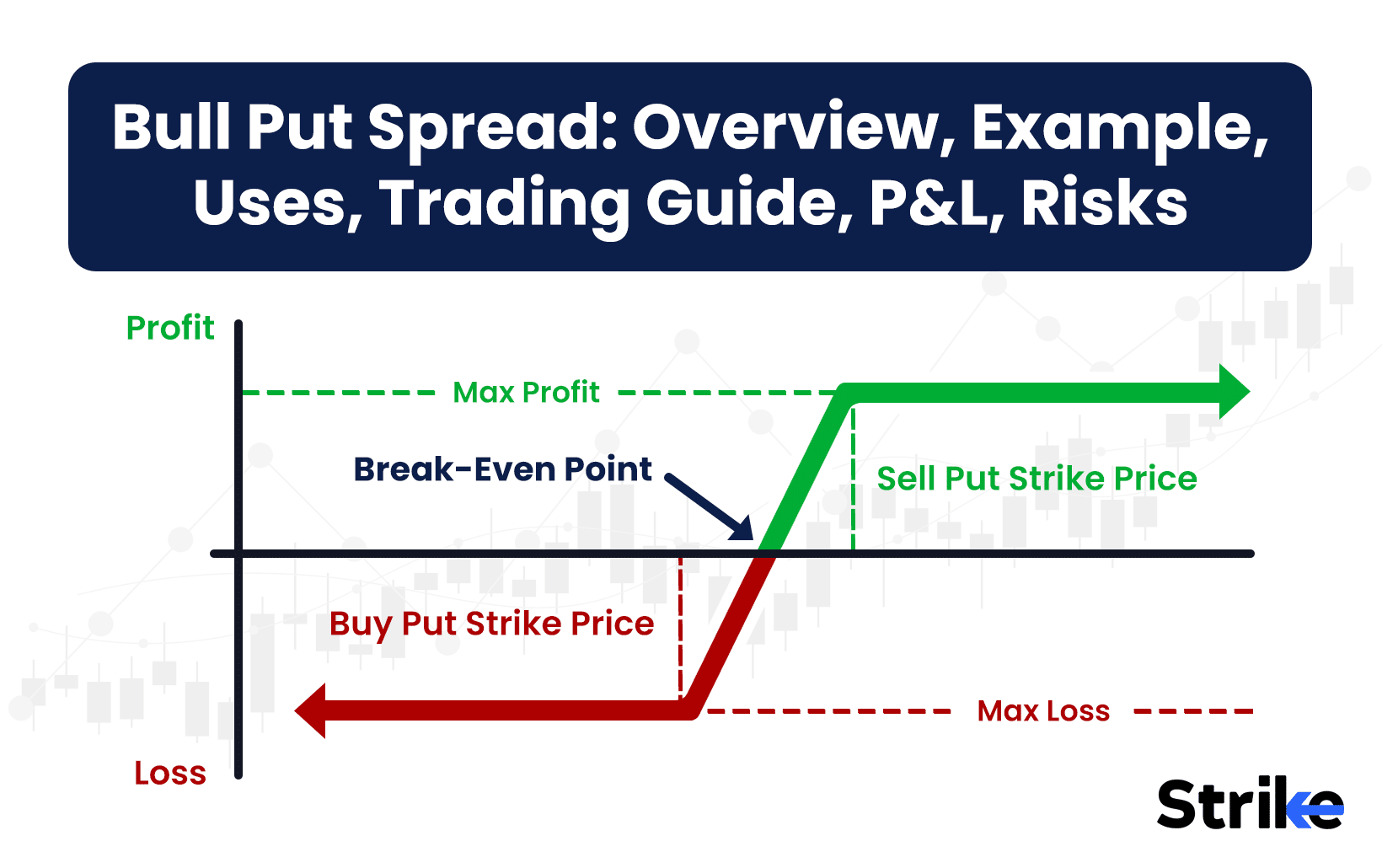





No Comments Yet